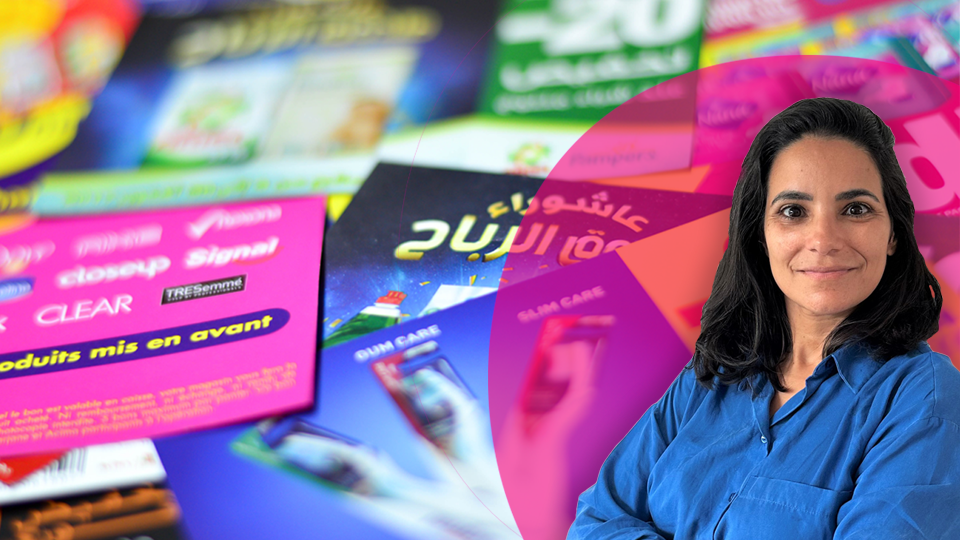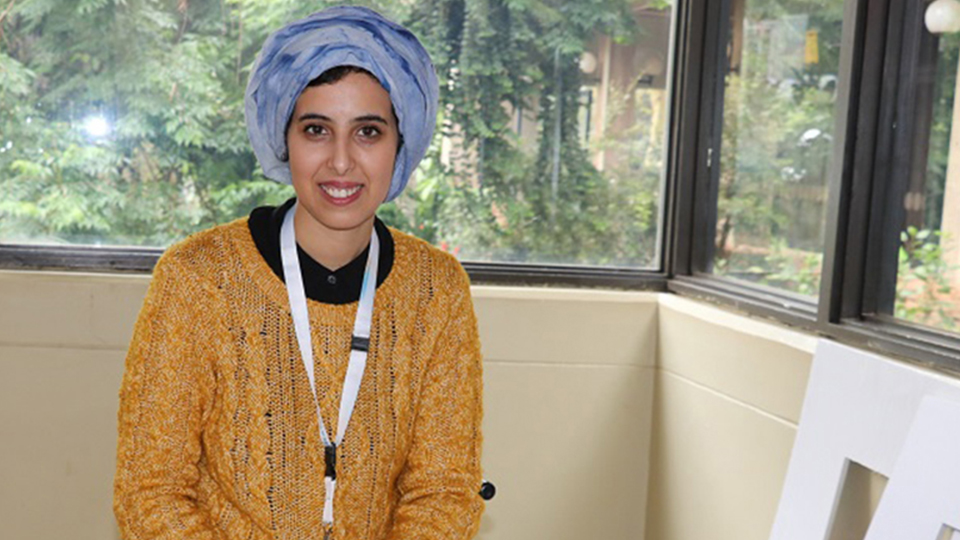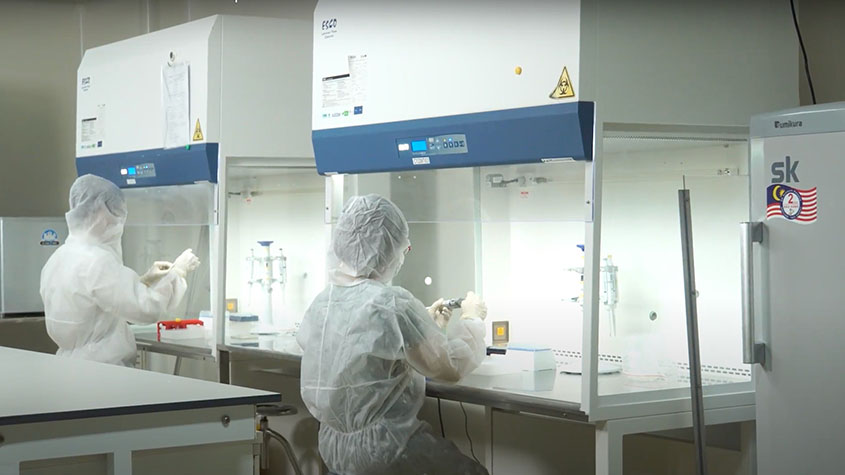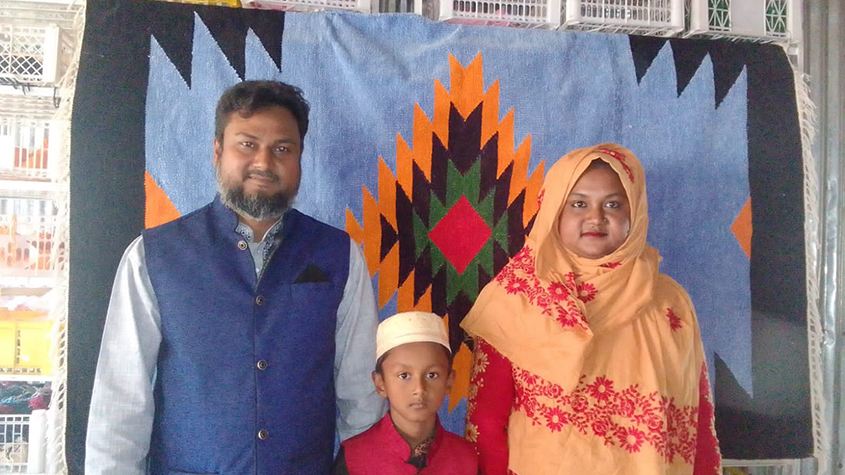Background

In an 8,000 hectare area within the calcareous semi-desert Sous valley of southwestern Morocco, the argan tree (argania spinosa) can reach to ten meters high and lives up to 200 years. Extensive and deep root systems enable it to retain water and withstand high temperatures, making it extremely well adapted to drought and other environmentally difficult conditions. These characteristics have made it a bulwark against erosion and an advancing Sahara desert. At first glance the argan tree and its prickly leaves, low, thorny branches and gnarled trunks may not seem so appealing, but it has played an important part in traditional culture of the local people, especially the Berber tribes. For generations, they have used argan wood as building materials and fuel, and its leaves and pulp are used as food for goats.
The prize of the argan tree however is its yellow-green fruit. Larger than walnuts, argan fruit has a thick, bitter peel surrounding a sweet smelling layer of pulp, under which is a very hard nut. Inside the nut are one to three small, oil rich kernels, which can be extracted for use as oil in food and cosmetics. One of the rarest oils in the world, argan oil is high in vitamin A, vitamin E and essential fatty acids, and is believed to help many skin ailments such as dry skin, acne, psoriasis, eczema and healing scar tissue. It is also famous for its anti-aging properties. Slightly darker than olive oil, argan oil has a delicate hazelnut taste and unique cosmetic, medicinal and culinary properties. For hundreds of years argan oil has ensured the subsistence of a large number of rural families, either through the sale of the nuts or oil. Today, the vast majority of argan oil is produced by the work of women in cooperatives such as the Amal Cooperative in Tamanar and the Tifaout Women’s Agricultural Cooperative in the Souss-MassaDraa region.
The importance of the argan tree was recognized by the United Nations Education, Scientific and Cultural Organization (UNESCO) in 1998 when the southwestern region of Morocco became a Biosphere Reserve under UNESCO’s Man and the Biosphere Program.
Traditional Knowledge

Producing argan oil is a very labor intensive process, and Moroccan Berber women have relied on their traditional knowledge to extract the highest quality oil for centuries. Once ripe, argan fruit is typically collected by women and brought to villages where they work in a traditional “seated assembly line” to extract the oil. To get to the kernels, women crack the nut open the traditional way between two stones, with the leftover shells being put to use as fuel for fire. Sixteen times harder than a hazelnut, argan nuts rank among the hardest in the world, and this first stage of cracking them open is the most difficult part of the process. Machines designed to crack them often fail, and the traditional way of cracking them remains the most effective way to get to the kernels.
After getting rid of the nut shells, the kernels are passed to other women who then crush and pound them in a handmade mill called an azerg. If the oil being made is to be used for cooking purposes, the kernels are roasted before they are crushed to bring out the flavor. The resulting paste is mixed with water and repeatedly kneaded and pressed by hand to extract the oil, which is brought to the surface of the mixture. Since goats and other animals are known to love argan, the leftover residue is conserved and used to feed livestock. Using the traditional processing method, it takes approximately twenty kilograms of argan fruit and nearly twenty hours of labor to produce just one liter of argan oil.
Goods with Specific Geographical Origin
The argan tree used to grow throughout North Africa, but today it only grows in southwestern Morocco. Argan is perfectly adapted to the region’s harsh environment, with the ability to survive extreme heat (over 50°C), drought and poor soil. Although numbers are dwindling, argan is the second most abundant tree in Moroccan forests, with over twenty million trees living in the region and playing a vital role in the food chain and environment. The tree’s roots grow deep into the ground in search of water, which helps bind soil and prevents erosion. Much of the region has resisted the advance of the Sahara desert due to the argan tree, and it therefore plays an irreplaceable part in the ecological balance of the region.
It is not only the geographical conditions of the region that make the argan tree unique, but also the role that the tree has played in the cultures of the Berber and Arab people living there for hundreds of years. Argan is a multi-purpose tree and each part of it is usable as a food or economic resource. The fruit can be eaten, oil can be extracted from the nuts and the tree’s wood can be used for fuel. The tree has therefore played a vital socio-economic role in local culture, and currently provides a significant source of food and income for around three million people, over two million of which live in rural areas. The importance of argan trees to the geographical region and the people living there led the Moroccan government to seek protection of the tree as a Geographical Indication (GI).
Geographical Indication
The unique geographical properties of the region led to an application with the European Union (EU) to protect Argane (argan in French) by the Moroccan government. The application for Argane to become a Protected Geographical Indication (PGI) was made in October 2011 with the European Commission. If approved, Argane could be one of the first PGIs from Africa to receive such protection within EU regulatory framework. A PGI registration would identify Argane as being from a specific region with resulting unique properties and signal to consumers that its production meets specific standards. It also could help protect traditional knowledge and promote producers’ collective rights.
There are three other main benefits should the Argane PGI be registered. First, the argane name would be reserved for those having the right to use it and products derived from argan (such as argan oil) and the producers of these products could benefit. Second, argan producers would have the possibility to enter the EU market under a PGI, which would allow them to differentiate their products from competitors and highlight the specific characteristics of Argane products. . Third, it would require products such as Argane oil to be produced according to specific standards, which could guarantee product origin and ensure consumers receive genuine Moroccan products. These standards could also make it easy to detect unofficial and fake Argane based products, thus protecting both local producers and consumers.
Research and Development

essential fatty acids.
Many R&D projects have been undertaken on the argan tree by numerous domestic and foreign institutions dating back to the 19th century. While all of these projects could recognize the benefits of argan oil, none were able to isolate the exact substances that gave the tree and oil its unique properties, and none were focused on bringing real change to the women in the region. That was until Professor Zoubida Charrouf of the Science Faculty at Mohamed V. University in Rabat, Morocco, with the help of a four year research grant from the International Development Research Center (IDRC - a Canadian Crown corporation collaborating with researchers from the developing world), discovered two molecular substances an antimicrobial agent and an antioxidant – unique to the argan tree that give it many positive properties.
Learning about the many benefits of argan oil through the traditional knowledge of rural women, professor Charrouf quickly recognized the oil’s vast potential. She knew that further scientific R&D would be helpful in the long run, but it wouldn’t bring immediate benefits to the argan producing communities. She was determined to give something back to them in exchange for their traditional knowledge. Professor Charrouf stated that “There has to be a return to the disenfranchised of these regions who taught us about the argan’s benefits.” Using the funds from the IDRC research grant, in 1998 Professor Charrout set out to improve the lives of rural Moroccan women, protect their traditional knowledge and improve the processing of argan oil.
Although technology exists for pressing oil from seeds, the unique shape and hardness of argan seeds posed a challenge, even with modern technology. Along with her husband, Professor Charrouf researched ways to improve existing technologies that would allow more efficient oil processing. One such improvement was the development of a new roasting machine, which was adapted from plans from another IDRC agricultural project in Burkina Faso. This improved roaster allowed producers to get more out of each tree, thus protecting argan forests while improving the economic and social situation of rural communities.
Another R&D improvement was to mechanize some of the tedious production tasks, such as grinding argan nuts and pressing the oil. While a portion of the R&D into these improvements focused on mechanizing the manual cracking of argan nuts between two stones, it was eventually determined to be a process not currently suited towards mechanization. This is because the number of kernels in each nut varies, and the traditional knowledge that local women possess about cracking argan nuts means that a manual process will yield the best results.
Commercialization and Partnerships
Without research and development (R&D), there is a good chance that the argan oil cooperatives and successful commercialization would have never gotten off the ground. For hundreds of years, production of argan oil was only on a local, household scale. It was not until the early 1990s that women started to form cooperatives to better organize the production and commercialization of argan oil. Most local producers’ inability to participate directly in high value argan oil markets, and the barriers they face to indirect participation in argan fruit markets due to poor transportation infrastructure, has motivated the creation of two kind of cooperatives: non-mechanized cooperatives sponsored by the Deutsche Gesellschaft für Technische Zusammenarbeit (GTZ), a German development and sustainability organization, and mechanized cooperatives established by Professor Charrouf with support from the European Union, Oxfam and the Japanese International Cooperative Agency (JICA), among others.
For non-mechanized cooperatives, producer families have usufruct rights to argan trees and gather the fruits in the wild. The quantity fluctuates considerably depending on location and ranges between 5-160 forty kilogram sacks per season. The gathering and subsequent peeling process is undertaken by cooperatives comprised of 20-60 women per cooperative. By 2005 there were approximately thirty such non-mechanized cooperatives. Distribution of hand-pressed argan oil is undertaken by the Union of Women’s Cooperatives of the Arganeraie (UCFA), which is sold mostly in the local market. UCFA also sells hand-pressed argan oil to small private companies and tourist centers such as Agadir and Essaouira.
For the mechanized cooperatives developed by Professor Charrouf, part of the process is mechanized and the sales are organized so that the women can earn a decent living, provide for their families and help educate their children and themselves. This has given rise to the Amal Argan Oil Cooperative (Amal) in Tamanar, seventy kilometers south of Essaouira. Amal was the first cooperative in Morocco to be completely run by women, most of which were widowed or divorced
The Amal and other cooperatives have taken advantage of new and improved machines, to speed up production, improve the quality of the oil, double the oil’s shelf life and reduce waste. While nuts are still cracked manually, adoption of new and improved machines has significantly benefited local producers such as the Tamanar cooperative. The goal, explains Professor Charrouf, was not to simply help commercialize argan and scientifically confirm its benefits, but also to help those dependent on argan forests gain greater benefit from the trees. That way, she believes, producers will be more motivated to protect and replant it.
Mechanized cooperatives changed the lives of women in the region. They started to expand their market reach beyond the local level, and grocers and exporters took notice. The women in the cooperative enjoyed a newfound level of economic freedom, which garnered them a lot of attention for their cooperatives and high quality argan oil. Women in other argan producing areas got together and many cooperatives quickly sprung up throughout the region, and by 2010 there are approximately fifty argan oil cooperatives run by women in southwestern Morocco. All of these cooperatives commercialize their products in a number of different ways. Some target export markets, while others target local markets at the household level.
For the export market, foreign companies have gotten involved with cooperatives, utilizing them as exclusive suppliers of argan oil. One such example is Kahina, a United States based company selling argan oil products. Founded by Katharine Phillips L’Heureux, Kahina buys its argan oil directly from various cooperatives in Morocco, exports it back to the United States and uses it as the main ingredients for the company’s line of skin care and cosmetic products. To ensure that the cooperatives are not forgotten, Kahina donates twenty five percent of all of its revenue to the cooperatives that supplied the company with argan oil.
Another example is Targanine, a group of six mechanized cooperatives established by the Science Faculty at Mohamed V. University in Rabat with the help of Professor Charrouf, that has received significant international support from organizations such as Argan Quebec, IDRC and Slow Food, as well as from the diplomatic missions in Morocco of countries such as Canada, Great Britain, Japan and the Netherlands. Targanine has used its website to connect with customers throughout the world and expand its market reach.
Social Issues

tree, which many animals rely on for sustenance
The incorporation of modern, mechanized aspects into the commercialization of argan oil has also played an important part in stabilizing argan forests. Although Argan trees remain the second most abundant trees in Morocco, centuries of traditional processing has had an adverse effect, with more than a third of Morocco’s argan forests disappearing. New methods of production and commercialization combined with traditional knowledge has not only reduced oil extraction time, but has also made the process more efficient. Cooperatives therefore do not have to use as much fruit as before and can get more oil out of each tree, thus protecting a vital ecological and socio-economic resource.
Unfair Competition
The increasing popularity of argan oil has brought many benefits to the region and the cooperatives, but it has also brought an increase in unscrupulous activities. While a portion of argan oil is made for export, as of 2010 the bulk of it is still sold domestically to tourists and others from outside the region with little knowledge of argan oil. Dishonest vendors have taken advantage of this, and often sell diluted argan oil along the roadsides near cooperatives in the region. These unofficial argan oils are usually diluted with other oils, and in some cases sellers simply color olive oil with paprika or other colorings to make it look like real argan oil. These dishonest practices can take away a significant amount of business from the real cooperatives, which could have a serious detrimental effect on them and the women who depend on argan oil for their livelihoods. While it is difficult to enforce, more concerted efforts by the cooperatives and the Moroccan legal system are helping to mitigate the negative effects of sellers trying to ride the wave of the cooperatives’ success.
Business Results
By combining modern technology with traditional knowledge, argan oil cooperatives have significantly increased the economic situation of women in the Essaouira region. By 2010, women were earning approximately six Euros per day through the cooperatives, which is ten times more than they were previously earning producing argan oil on their own. Cooperatives have used their success to reach an international market, and argan products are now highly valued and sold throughout the world. Some cooperatives have even established their own websites to reach as many potential international customers as possible.
Social and Environmental Protection with Geographical Indications
The traditional knowledge of argan oil combined with the organization of cooperatives, adoption of modern processing techniques and backing of a regional GI has brought significant change to the women producing argan and the society in the region as a whole. As a member of the Taitamine cooperative says, “I’ve been able to pay my children’s school fees, I’ve learned to read and write, and we have the chance to attend awareness-raising sessions on all aspects of family life and running a cooperative.” Protected by a GI, argan oil has come to represent a chance for economic and social freedom for many rural women, while ensuring the environmental advantages of the argan tree are also preserved.



